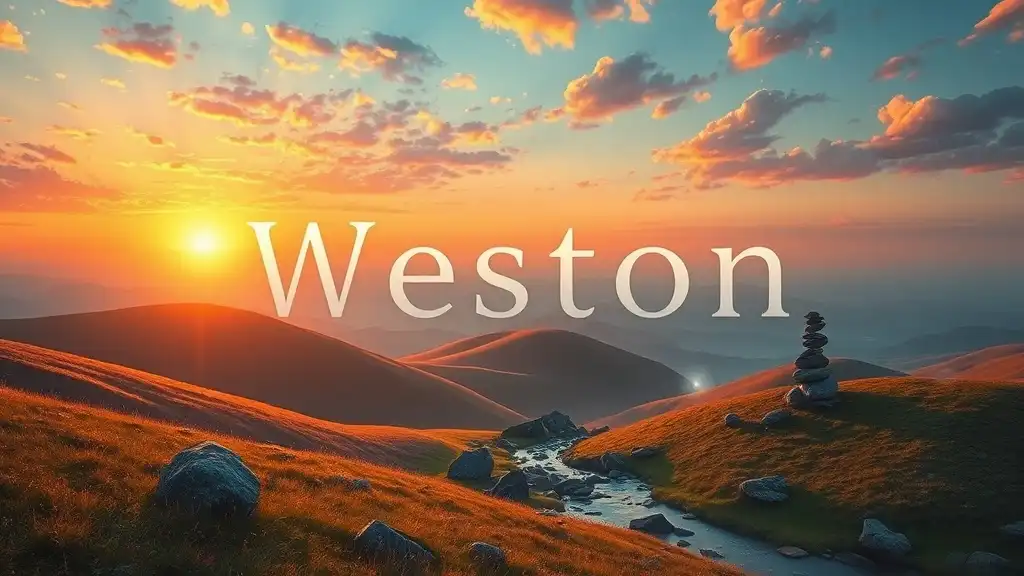The significance of direction is a foundational element in numerous spiritual practices. They serve as guiding lights, showing us the way to our true selves and deeper understandings of the universe. Among these cardinal directions, the west holds a unique spiritual meaning that resonates across various cultures and philosophies. In this exploration, we will delve into the profound symbolism of the west, invoking its spiritual connections, color meanings, and its role in rituals and meditative practices.
The Spiritual Significance of Direction
Understanding Cardinal Directions
Cardinal directions—north, south, east, and west—are not merely geographical indicators. They represent energies and qualities that have been imbued with spiritual significance throughout history. Each direction holds unique attributes and lessons that can enrich our spiritual journeys. The west, in particular, is associated with introspection, reflection, and connection with the subconscious mind.
The Elemental Associations
In many spiritual traditions, the elements—earth, air, fire, and water—correspond with the cardinal directions. The west is primarily linked to the element of water, symbolizing emotions, intuition, and reflection. This fluid element represents the depth of human experience, offering us a safe space to explore our feelings. Just as a river flows and adapts to its surroundings, connecting with the west encourages us to flow freely through our own emotional landscapes.

The West in Various Spiritual Traditions
Native American Perspectives
In Native American teachings, the west is regarded as a sacred space, often associated with the setting sun. Here, the sun signifies the transition from light to darkness, representing life's cyclical nature. The west is a place where the spirit goes to rest, reflecting the end of a journey and laying the groundwork for renewal and rebirth. Many ceremonies are focused on this direction to honor ancestors and seek guidance as one navigates through life’s phases.
Eastern Philosophies
When considering the Buddhist and Hindu perspectives, the west can symbolize the ultimate quest for enlightenment. In these traditions, the sun setting in the west signifies the end of ignorance. It is a reminder that just as the sun gives way to night, so too must one let go of misconceptions and traverse deeper into the inner self. This journey can be likened to a spiritual illumination found within oneself.
Western Mysticism
In the realm of Western mysticism, the west serves as a gateway to the subconscious. It urges individuals to dive into dreams and hidden desires, thus prompting personal transformation. Astrologically, the west is often viewed through the lens of the descendant—the point in the chart that denotes relationships and the influence of others. The essence of the west serves to remind us that while we seek our paths, we are also shaped by those we encounter along the way.

Symbolic Representations of the West
Colors and Symbols
The color blue is predominantly associated with the west, embodying calmness, trust, and emotional depth. In spiritual symbolism, blue reflects clarity and the essence of water. Combine that with black, a color that signifies mystery and uncharted territories, and you have a profound palette that invites exploration of the unknown.
Common symbols tied to the west—such as the setting sun—highlight the beauty of closure and the promise of new beginnings. They remind us that while one chapter may end, another is poised to start—the eternal dance of life.
The Journey to the West
The concept of a journey toward the west transcends geography; it is inherently symbolic of exploration and transformation. Myths and stories often underline the significance of this quest as a metaphor for personal growth. Think of the hero's journey, where characters venture into the unknown of the west, facing their fears and ultimately contributing to their self-discovery. This narrative resonates deeply within us, reminding us that each step we take in life also leads us closer to understanding ourselves.

Meditative Practices Focused on the West
Guided Meditations
Engaging in guided meditations that focus on the west can help individuals connect with its enriching energies. Picture the setting sun, casting golden hues over the horizon. Visualize the warmth enveloping you, washing away stress and inviting calm. This practice allows you to connect with your emotions and reflect on your innermost thoughts, facilitating a meaningful dialogue with the self.
Rituals and Ceremonies
Rituals connected to the west can be simple yet powerful. One can create a sacred space aligned with westward energy by incorporating elements like water, blue candles, or images of sunsets. Such practices are not merely about honoring the west; they become avenues to find peace, solace, and direction. Setting intentions during these rituals can reinforce connection with your deeper feelings and aspirations.

Conclusion
In exploring the spiritual meaning of the west, we have uncovered its role as a guide and teacher on our individual paths. From its elemental ties to water, to its representation in various spiritual traditions, the west offers profound insights into our psychological landscapes and emotional journeys. By honoring this direction through meditative practices and rituals, we can deepen our connection to ourselves and the universe. May this exploration inspire reflection and growth as you navigate your journey towards the west.



















